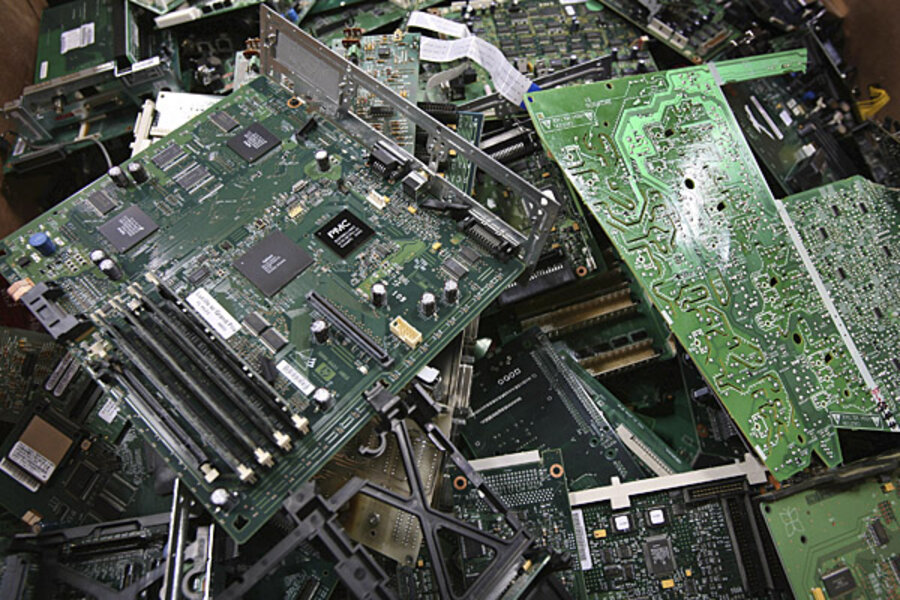How to save money on a computer upgrade
Loading...
For most of us, the desire to replace our computer comes about due to one of two things. Either there’s a hardware failure or there’s a need to run some application that doesn’t run well on our older computer.
In either case, I’ve found myself in a position to replace my computer twice since I’ve owned my own. I replaced the computer I purchased in 1998 with one purchased in 2002, and I replaced the one purchased in 2002 with one purchased in late 2008.
I am now starting to potentially look for another computer. I’m not quite at the replacement point, but I recently reinstalled my operating system on my computer in order to just get a fresh start with everything and it still crawls when I do things like editing audio or video. I’m also beginning to suspect some other hardware issues going on with it, such as an occasional complete system crash when nothing is really happening.
In any case, it’s likely time to replace it, which means that I’m starting the replacement process.
From my perspective, there are four main ways to save money on a computer replacement.
1. Build it yourself
This is probably the best method of all if you’re interested in learning more about how a home computer actually works and want to build some useful skills along the way. It’s also the best way to maximize your “bang for the buck” in terms of the computer you wind up with and it also lets you control the exact quality of each component in your computer.
The drawback with building it yourself is that it takes time. You have to order each part separately and you also have to be following a guide (particularly if this is your first time doing anything like this). I’ve also found that when building it myself, I tend to roll any “savings” into buying better components, meaning that rather than spending less, I spend the same amount and end up with a higher-end system with more reliable parts.
If you’re interested in this route, I highly recommend this Lifehacker article providing a first timer’s guide to building a computer from scratch. When I buy parts for this, I usually shop at Newegg.
2. Buy low end and upgrade
Another option that’s not quite as technically intimidating as building your own computer but still requires you to dig into the case a little bit is to simply buy a low-end computer and upgrade it yourself. Buy an off-the-shelf PC that’s got a low-end sticker price on it, then upgrade the memory and the video card (these are the two biggest upgrades for me, since I often make videos on my computer) and perhaps the hard drive yourself.
Swapping those pieces in and out of a modern computer is pretty straightforward. You can find very nice step-by-step guides with lots of photos online to help you do this. Plus, you learn a new skill along the way in a low-stress and low-risk environment.
Will you save money this way? You might save a little, but the big advantage is that it lets you spread out the purchase a bit. You can buy the low-end box, take it home, set it up, and use it for a while (though it might be slow), then upgrade the components later on as you feel they’re necessary. Even better, if you find out that the low-end computer actually fits your needs, there’s no need for you to upgrade parts.
3. Wait patiently for a deal
If the thought of ever opening up a PC case makes you shudder, that means you’re probably going to be buying an all-in-one system from one of the PC manufacturers. My best advice to you is to find a “PC deals” forum (I particularly like the one at fatwallet) and just browse it for a while until you get an idea of what the “ordinary” deals are and what an exceptional deal really looks like.
If you watch PC prices for a while, you’ll get a sense of what you’re going to have to pay per gigabyte of memory and terabyte of hard drive space and what the value of various processors are. I reached a point with my last computer purchase where, if you told me the manufacturer, the chip, the amount of memory, the video card, and the hard drive space, I could tell you pretty accurately what the “deal” price was going to be.
I just waited around until I found something that was exceptionally below the price I expected and I dove in. It took about a month of daily checking.
4. Use a rewards credit card
When you do spring for a computer, it’s going to be an expensive one-off purchase. I highly recommend using a credit card for it (assuming you pay off your card balance each month). First, a credit card has way better fraud and identity theft protection than a bank card. Second, you have the possibility of getting some strong rewards when you buy.
Some cards can return up to 3% of your purchase to you in the form of various rewards. Even a 1% return in the form of a gift card you’ll actually use for something worthwhile is better than nothing. On a $500 purchase, a 3% reward is worth $15 – even a 1% reward is worth $5.
The key, of course, is to pay off the balance in full at the end of the month. Don’t carry a balance forward or you quickly lose any benefit you might have had.








